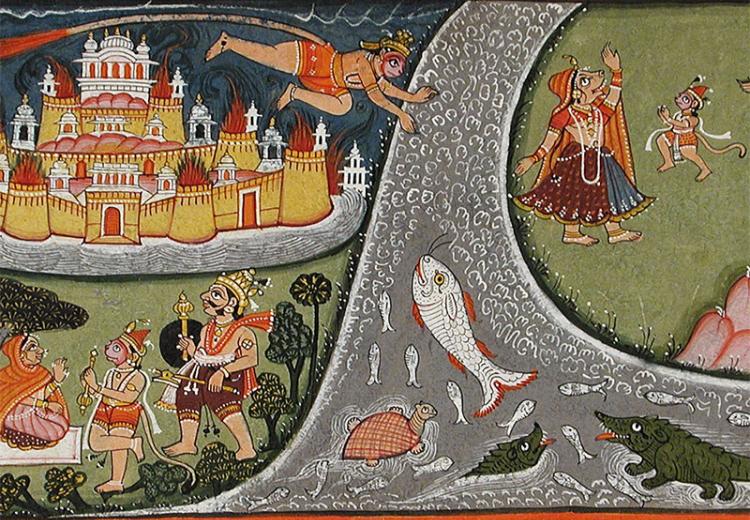Lessons of the Indian Epics: The Ramayana: Showing your Dharma

The Citadel of Lanka, a detail from "Hanuman Visists Sita in Lanka," Folio from a Ramayana (Adventures of Rama), c. 1775-1800; India, Gujarat.
The story of the Ramayana has been passed from generation to generation by numerous methods and media. Initially it was passed on orally as an epic poem that was sung to audiences by a bard, as it continues to be today. Over the centuries it has also been written down in numerous languages, creating thousands of different (but related) texts. With the important role that the Ramayana plays in Indian society, and particularly as a teaching tool for dharma and other Hindu concepts, it should not be surprising to discover that the story has also found its way into numerous other media as well. For example, components of the story are regularly performed in song, theater productions, and dance performances. The story can also be found depicted in the plastic arts, and in painting in particular, and continues to be visually recreated to the present day. The faces of Rama, Sita, and Hanuman appear in the every day life of many Indians, and the story has crossed over into media that was not even imagined at the time when the story was composed, such as modern movies, comic books and mass-produced calendars. The Ramayana's popularity has not waned over the centuries. For example, Indian national television filmed a 78 part production of the Ramayana that was shown on Sunday mornings in 1987 and 1988. The television series was so popular that the country came to a virtual stop as nearly everyone who could gain access to a television stopped what they were doing to watch the televised adventures of Rama.
In this lesson students will expand their visual literacy skills while gaining insight on the characters and key events of the Ramayana.
Guiding Questions
How do visual images of the Ramayana depict the actions, events and lessons of the epic?
Learning Objectives
Identify the characters and events from the Ramayana contained in visual depictions of the epic.
Discuss the ways in which the images convey non-verbal information and messages, expanding their visual literacy.
Discuss the similarities and differences in the visual and verbal tellings of the Ramayana, and why a storyteller might choose one or the other as their medium.
